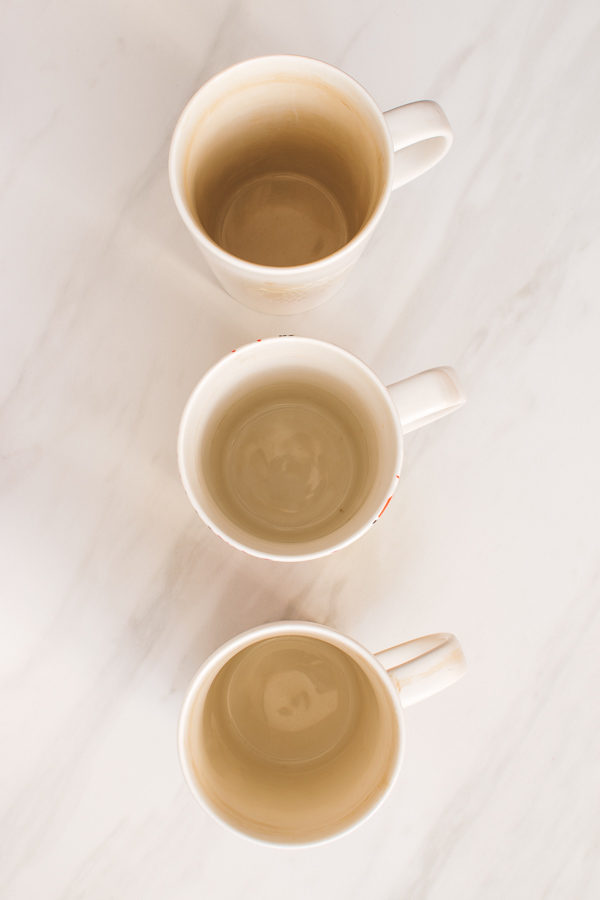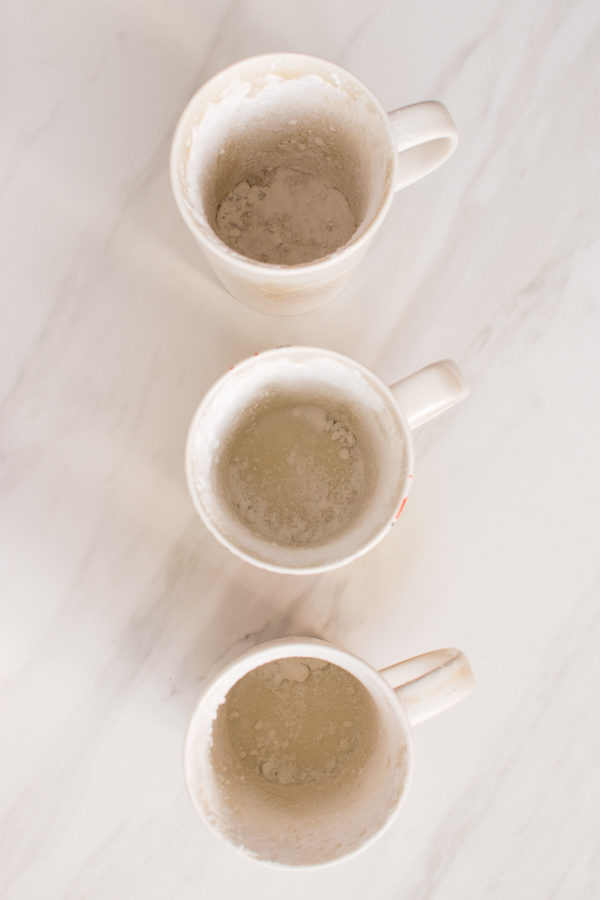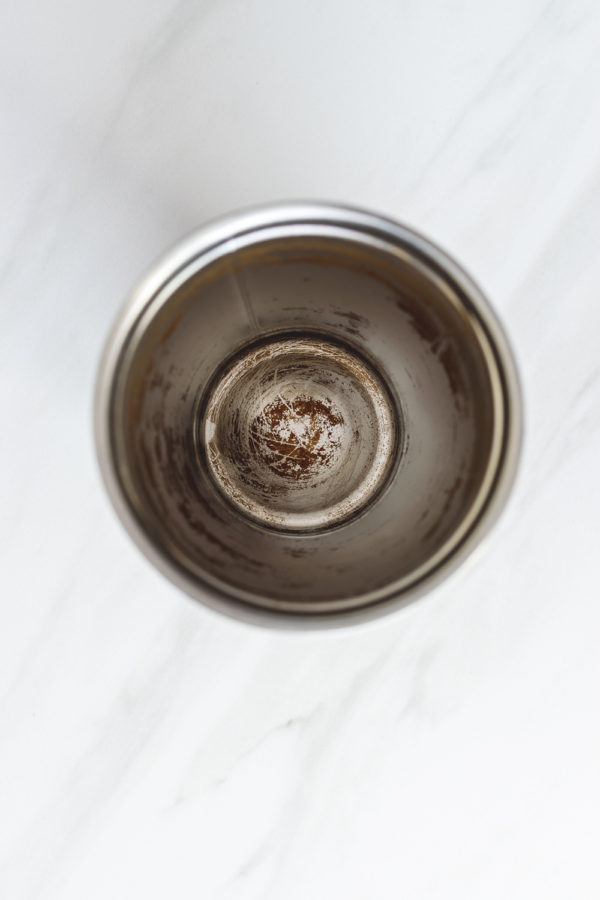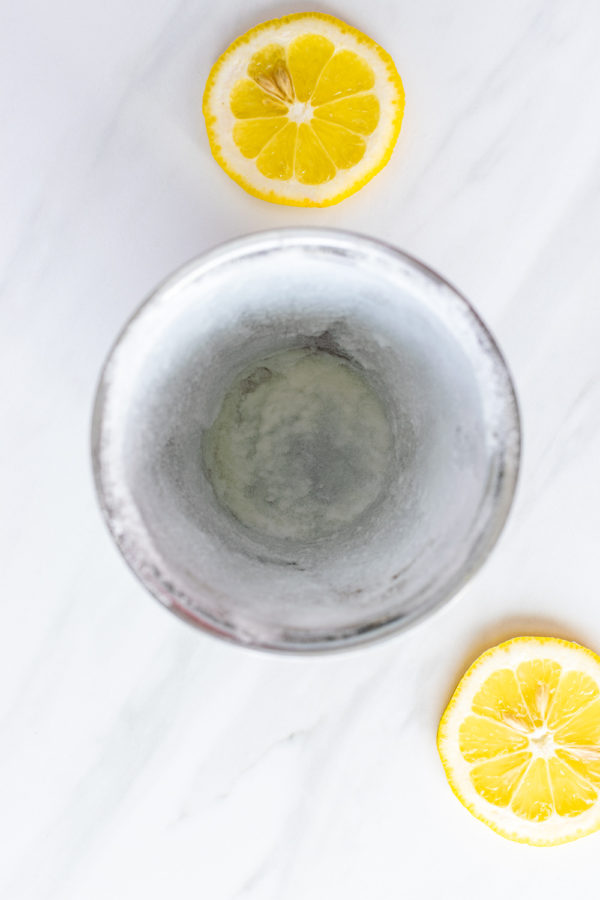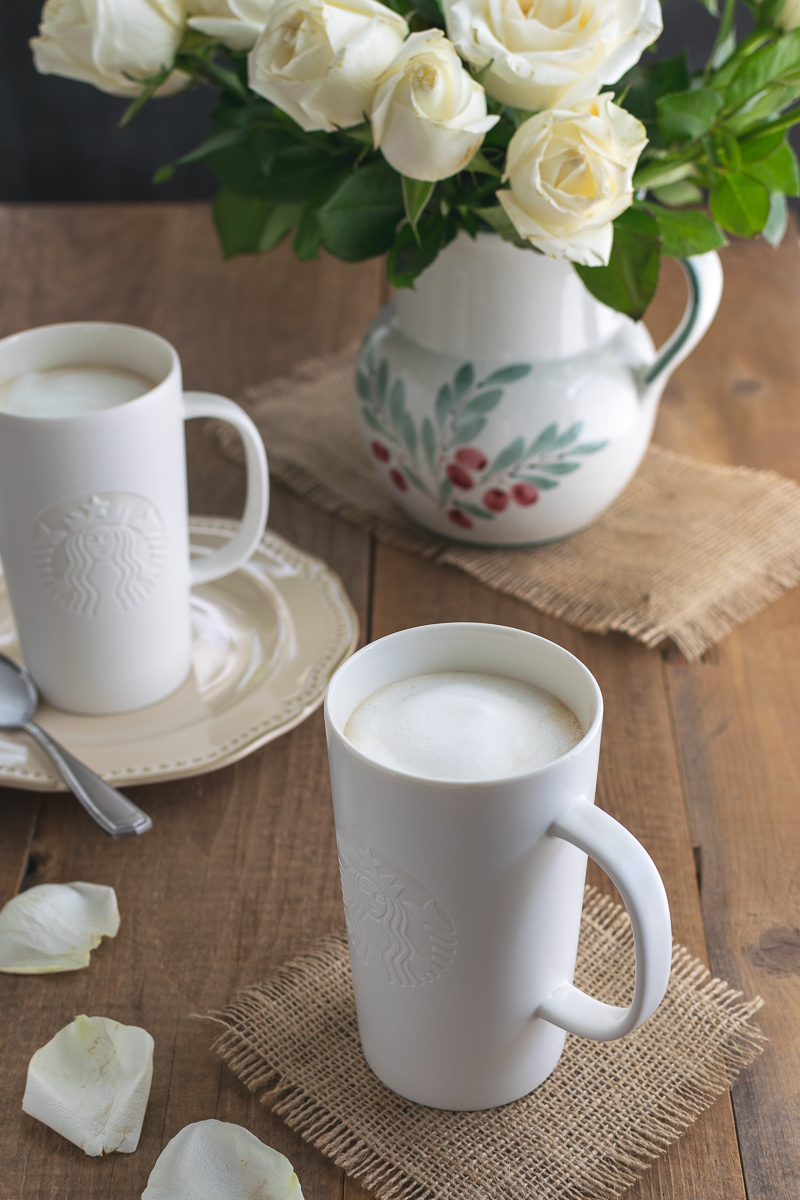
Remove Tea Stains from Cups
Tea and coffee drinkers have a universal problem, though we rarely speak about it. Tucked away in our cabinets, out of sight from our pretty tea and coffee bars, it’s our dirty little secret, literally—stained tea and coffee mugs. If you’re ready tackle this problem once and for all, I’ll show you the simplest way to remove tea stains from all your cups.
How to Get Rid of Tea Stains from Cups & Mugs
If you’re like me, you scrub and scrub at those pesky tea and coffee stains and they just won’t budge. Soap, hot water and elbow grease seem to do nothing. The dishwasher is useless. Because of this, I went on a mission to figure out the best way to clean these ugly stains from my tea and coffee mug collection.

And guess what? Not only did I discover the easiest way to say goodbye to these unsightly ringed stains inside my cups, but the cheapest. It turns out, I already had everything I needed to get the job done. I bet you do too.
When you see how easy it is to get rid of tea stains from cups, you’ll wonder why you didn’t clean them sooner.
The miracle cleaner: baking soda
The answer (or perhaps I should say, solution) to this stain-removing dilemma is two words: baking soda. If you bake goodies like breads, cookies and cakes, you certainly have a box in your pantry. You may even have a box in your fridge for absorbing food odors. Perhaps you even learned once upon a time to keep a box nearby your stove in case of fire.
So what is it about baking soda that allows it to make baked goods fluffy, freshen odors, extinguish fires, and wash away coffee stains?
I’m not a chemist, but let me explain. Baking soda, also known as sodium bicarbonate, is mildly alkaline. The pH scale measures how acidic or alkaline a substance is and ranges from acidic (0) to alkaline (14). Neutral is near the center at 8. Baking soda has a pH of 9 which means it’s alkaline. Lemons have a pH of 2-3 so they are acidic. Water is neutral at 7.
Baking soda as a leavening agent
You’re probably most familiar with baking soda as a leavening agent for baking breads and pastries. When baking soda is mixed with an acidic ingredient like milk, brown sugar or lemon juice, a chemical reaction occurs and carbon dioxide is released. These carbon dioxide bubbles expand when exposed to heat and makes your cookie dough and cake batter rise, and become light and porous.
Baking soda eliminates odors and puts out small fires
In addition to leavening, baking soda neutralizes strong odors, both acidic and basic. And since it releases carbon dioxide when heated, as well as water, it is effective at putting out small grease fires. In essence, the carbon dioxide smothers the fire since carbon dioxide is heavier than the oxygen a fire needs for combustion.
Baking soda as a cleaning product
Regarding cleaning products and stain removal, you should know that cleaning agents that are alkaline (basic) on the pH scale (baking soda) are good at removing fatty and greasy spots. On the other hand, acids (lemons) break down difficult stains like rust or mineral deposits. Now that you understand some of the chemical properties of baking soda, let’s get back to the problem at hand, removing tea stains from cups.
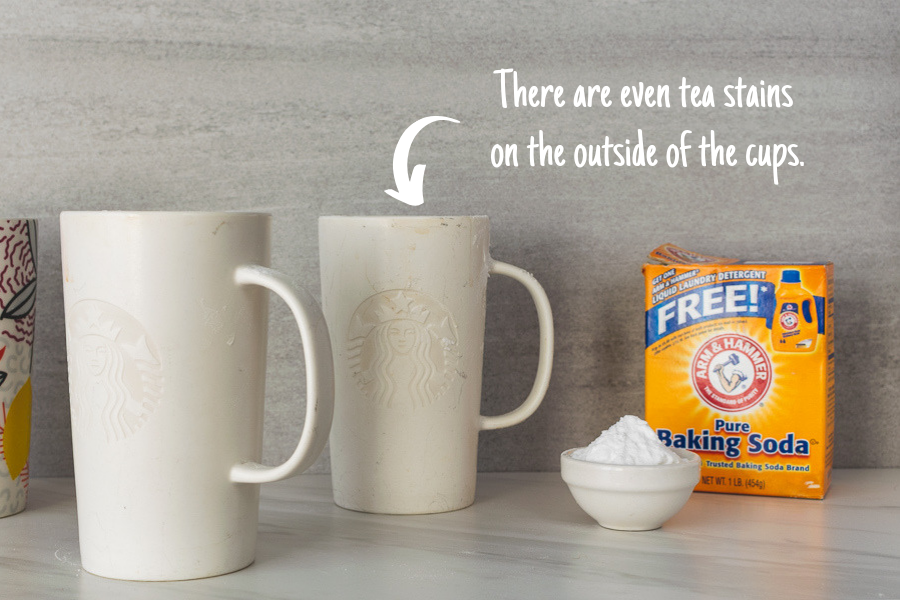
While there are several ways to clean stains from our drinking cups, I think baking soda is the best method since baking soda is:
- Cheap
- Readily available
- Non-toxic
- Mildly abrasive
These are the two ways I use baking soda to remove tea and coffee stains from cups.
Baking soda and water method
With this method you are creating a scrub. Baking soda is perfect for the job since it is a mild abrasive and should not scratch your drinkware. It’s abrasive enough to get rid of the stains, but not so abrasive that it ruins the surface of your mug. However, if you’re concerned about scratches, test a small section first.
What you’ll need:
- Water
- Baking soda
- Damp paper towel or sponge
Pour a small amount of water in your stained cup beginning at the rim (where stains may be the worst if you over steep like me) and swish it around. The goal is to get the entire inside of the cup wet. Dump out any excess water.
Next, sprinkle in a tablespoon or so of baking soda so it sticks to the water and forms a paste. I like to let it sit for a few minutes.
Finally, take a slightly damp paper towel or sponge and wipe out the baking soda and with it, the tea stains. You will notice that the paper towel turns brown from the coffee or tea. Note: make sure the towel or sponge is NOT soaking wet since the baking soda needs to be abrasive,
To finish things off, use the same paper towel to rub off any drip stains on the outside of the cup. Rinse the cup out with clean water and you’re done. Like magic, your cups will go from dingy and stained to looking new.
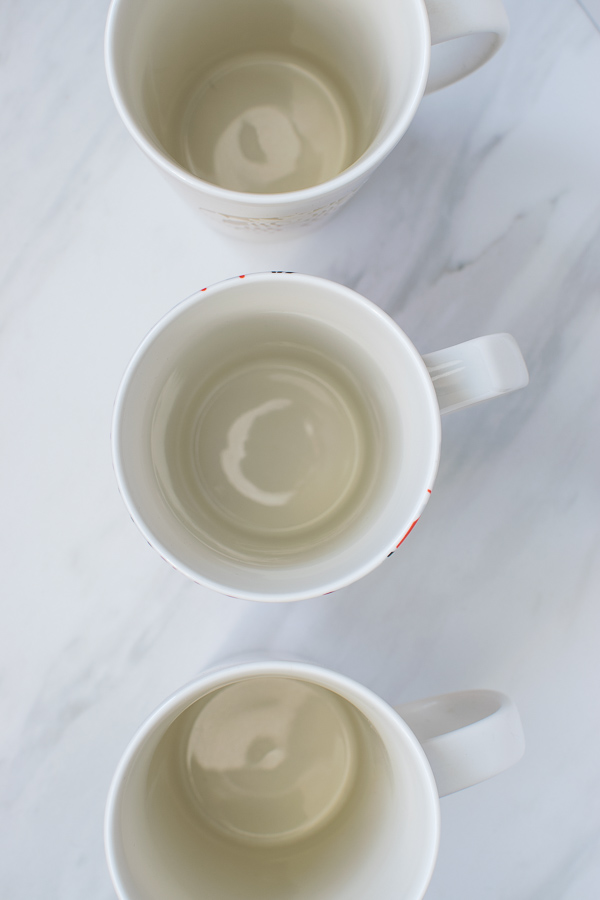
Baking soda and lemon method
With this method you are also creating a scrub. However, unlike water which is a neutral agent, lemons are acidic. Acids are helpful at breaking down difficult stains.
What you’ll need:
- Juice from a fresh lemon
- Baking soda
- Damp paper towel or sponge
Cut a large wedge of lemon (about one fourth of a lemon). Starting at the rim of the cup, squeeze the lemon all around, coating the entire inside and bottom of the mug. Swirl the juice around so the inside of the cup is coated. Like the baking soda/water method, sprinkle a spoonful of baking soda all around the cup so it sticks to the lemon juice.
When the lemon (acid) comes in contact with the baking soda (basic), a chemical reaction occurs. You’ll even see and hear fizzing and bubbling. Let the cup sit for a minute, and then take a slightly damp paper towel and wipe away all your tea and coffee stains.
If you don’t have a lemon handy, you can also use distilled white vinegar. Like lemon, vinegar is an acid at 2.4 on the pH scale. I prefer to use lemon since it has a pleasant smell.
How to clean tea stains from stainless steel travel mugs
My daughter is a barista at Starbucks. I benefit from that in a couple ways. First, she shares lots of coffee and tea-making tips with me. And she’s given me lots of great Starbucks gifts, including tons of their stainless steel travel mugs. Over time, however, the stainless steel mugs get really stained inside and lose their original shiny luster.
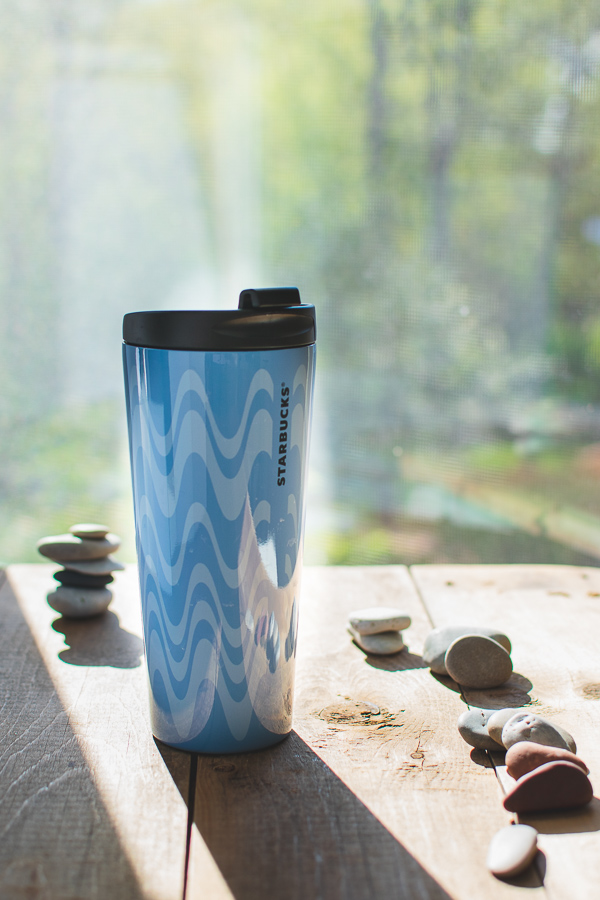
Like regular mugs and cups, I’ve tried soap and hot water to scrub the stains away but nothing works.
Since stainless steel scratches easily, I prefer to use the baking soda and lemon method for cleaning these travel mugs. (See above.) While the acidic lemon breaks down the stains, the mildly abrasive baking soda makes wiping them off a cinch. As a matter of fact, I don’t even have to scrub the stains. A quick wipe and rinse and the stainless steel mugs sparkle again like new.
If your hands are too large to reach all the way to the bottom of a travel mug, use a long-handled sponge to reach. Or if you’re using a damp paper towel, push it around with the handle from a long utensil like a wooden spoon.
It’s amazing how simple it is to get rid of tea stains from cups, including stainless steel travel mugs!
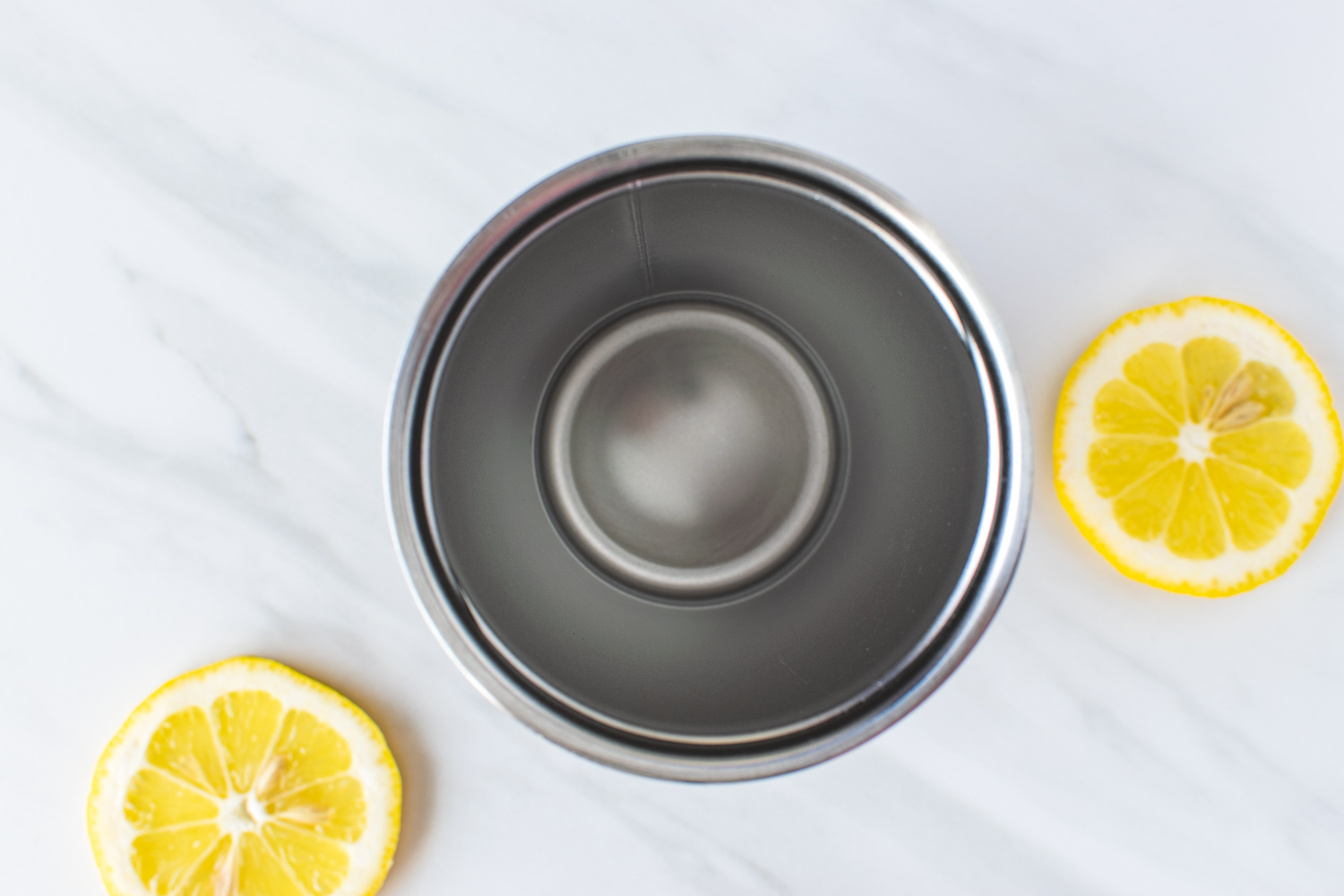
How to prevent tea stains in cups
While you cannot completely stop coffee and tea stains from occurring, there are sensible steps you can take to keep from making them worse. The main cause of stains is coffee or tea inside the cup for a long time. Here are a few tips:
- Do not over steep your tea. As a tea drinker I’m so guilty of this. I cannot tell you how many times I walk away while my black tea is steeping and don’t get back to it in time. Not only does the tea become bitter, but it creates a dark stain all around the cup.
- Finish your entire tea or coffee or dump it out of the cup. I cannot tell you how many times I think I’ve finished all my tea only to see there’s still some left in the cup.
- Rinse your cup as soon as your finished. Give your coffee mug a quick rinse when you’re done drinking from it if you’re not going to wash it right away. If you use a dishwasher, rinse the cup first.

